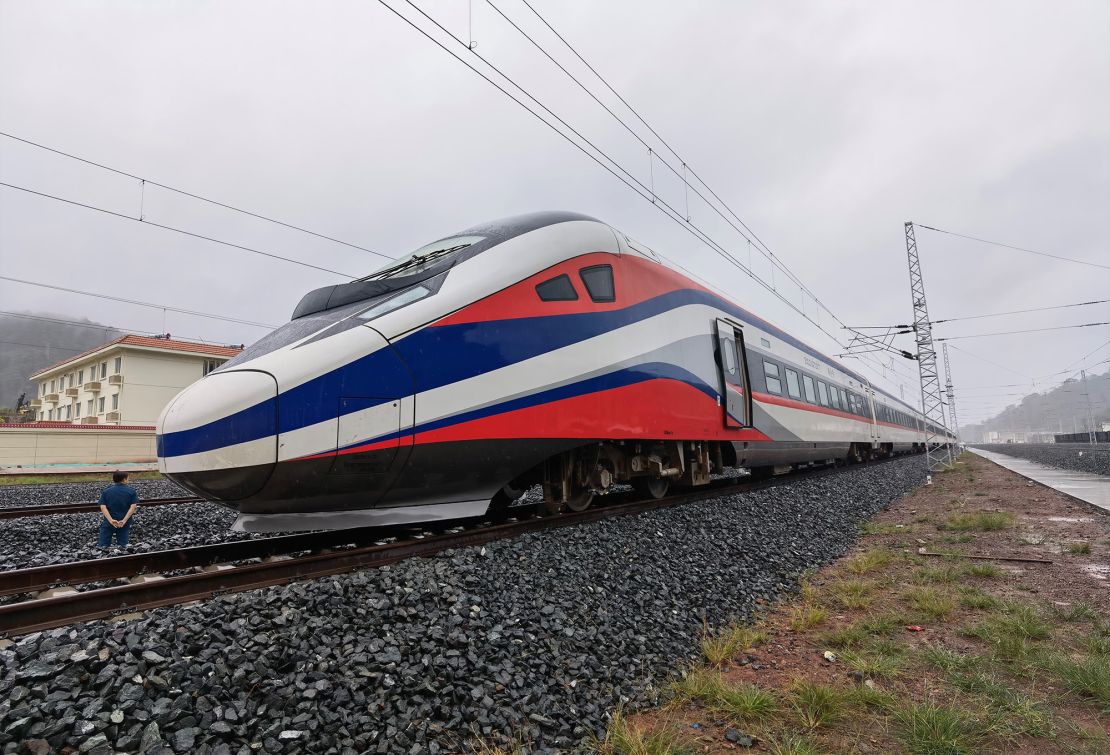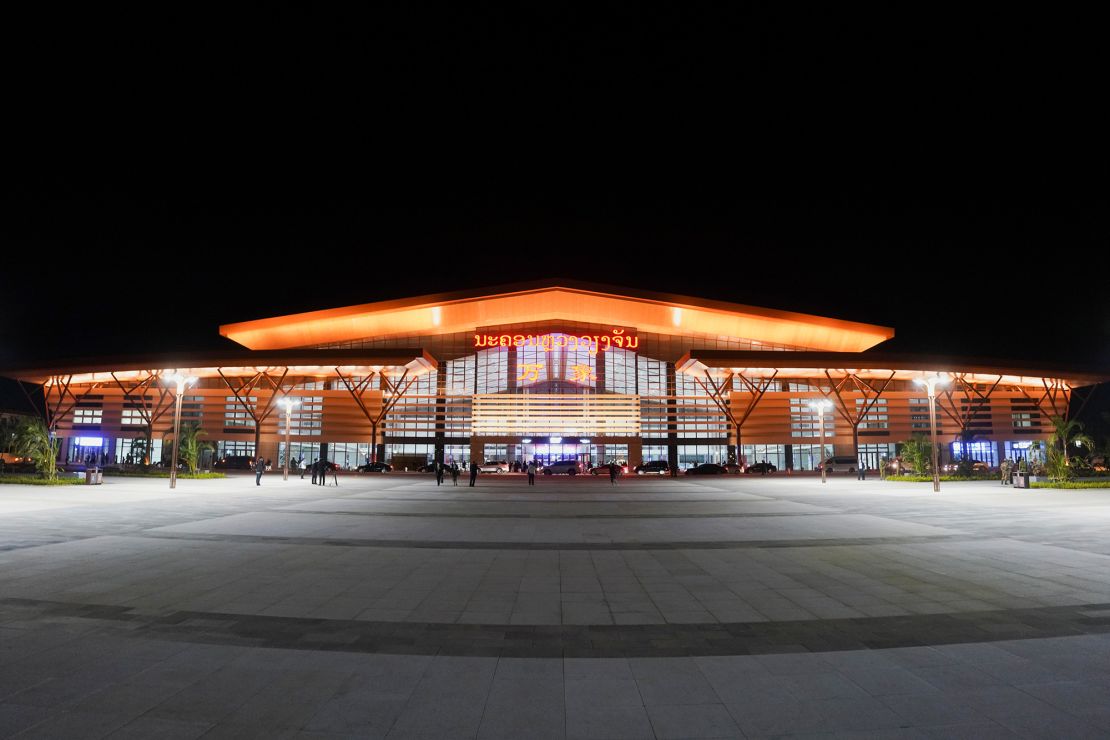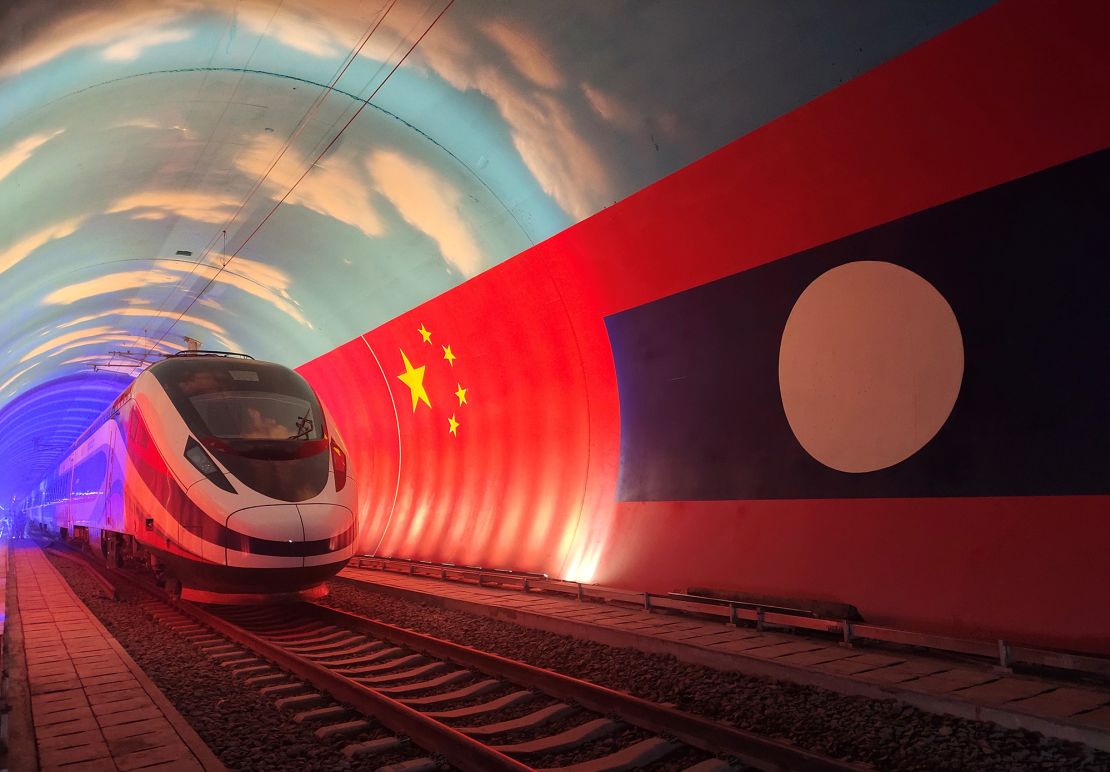Editor’s Note: Sign up for Unlocking the World, CNN Travel’s weekly newsletter. Get news about destinations opening, inspiration for future adventures, plus the latest in aviation, food and drink, where to stay and other travel developments.
The train is just north of Vang Vieng when the sound of a woman crying echoes through the carriage.
“I’m sorry,” sobs Ying, my seatmate on the journey north from Vientiane to Luang Namtha on Laos’ new semi-high-speed railway, tears streaming down her face.
“It’s just been so long since I saw my mom.”
Ying has been restless since the train pulled out of the station in the Laos capital, Vientiane.
She flits between apps on her phone as her feet play a skittish drumbeat on the floor.

That she seems a little excited is unsurprising. In the days before this new train entered service in late 2021, the journey between Vientiane, where she studies, and Luang Namtha, her home province in the far north of the country, was an epic affair of backbreaking proportions.
A bus journey on vertiginous potholed roads took at least 20 hours, even in perfect weather and traffic conditions. For the finale, she completed the last few kilometers on a motorized farm cart powered by an ancient two-stroke engine.
There are direct flights between Vientiane and Luang Namtha, but expensive tickets are a luxury for many citizens. As a result, she has only seen her family once in the last three years.
This slick new train, though, has changed all that. She must still cover the last few kilometers on the rickety old cart, but the bulk of the journey can now be completed in under four decadently air-conditioned hours.
“Before the train, it was hard for me to visit my family,” says Ying, who is making the trip north with her sister and her cousin. “I rarely saw them because the roads are so bad, and the journey is so long. Now I can make the trip easily.”
A faster pace of travel
Long regarded as a backwater in Southeast Asia, Laos is famous for its soporific vibe. So much so that the acronym in the country’s official title – Lao PDR – is often mangled from People’s Democratic Republic to Please Don’t Rush. But the new railway is encouraging a faster pace.
The train links Vientiane with top visitor destinations like Vang Vieng – a karst-studded playground famous for its adventure options – as well as Luang Prabang, the country’s charming former royal capital, and Luang Namtha, with its patchwork of hill tribe minorities and jungle-clad mountains – perfect for trekking and eco-tourism.
And it is a potential godsend for a tourism industry that desperately needs visitors in the wake of the pandemic.
Indeed, the semi-high-speed route now open between Vientiane, just across the Mekong River from Thailand, and Boten, on the border with Yunnan Province in China, is not just revolutionary for Laos: it’s as advanced as any railway infrastructure seen in Southeast Asia until now.
The new China-Laos passenger and freight railway, serviced by an Electric Multiple Unit (EMU) train, stretches 1,035 kilometers (643 miles) and was designed to link Vientiane with Kunming, capital and largest city in China’s Yunnan province. It will eventually connect a total of 45 stations between both countries, of which about 20 will provide passenger services.

Passengers are currently unable to travel through to Yunnan in China though as the latter has yet to open to international tourism. (Laos reopened in May 2022.)
For now, travelers can experience 422 kilometers of rugged, mountainous Laos landscapes as the train hits speeds of up to 160 kph (about 100 mph) and spears through 75 tunnels and over 167 bridges and viaducts.
Part of China’s Belt and Road Initiative
The new railway, which will eventually link Beijing with Bangkok and Singapore in the decades to come if all goes to plan, is a crucial component of China’s Belt and Road Initiative, the vast infrastructure development program launched in 2013 to expand Beijing’s influence.
Funding for it came mainly from China – although Laos stumped up a fair portion: a financial outlay that looks increasingly precarious considering its growing debt plight.
The cost of the railway has reportedly contributed to a US$480 million increase in Lao debt to the Chinese Export-Import Bank, fueling fears of dependence on its giant neighbor to the north.
Given its provenance, it’s no surprise that the railway has a Chinese feel. Stations are impressive, but austere affairs like ones found in China.
Inside Vientiane station, for instance, there are no food hawkers – those traditional mainstays of train travel in Southeast Asia. Just rows of seats, toilet facilities, a couple of vending machines, and a hot and cold-water dispenser to fill up drinking bottles or cups of instant noodles.
Signs around the stations feature Chinese and Lao script, but there’s little information available in English.
The train itself, which seats 720 people in first- and second-class carriages and plies the route between Vientiane and Boten twice daily, boasts white, red, and blue stripes, the colors of the Laotian flag. But overt local influence ends there.
Overall, the train favors function over form. There’s no food trolly service or dining car, which makes me grateful for the emergency rations I picked up at a sandwich stand near my hotel in Vientiane.
But the seats are comfortable, there’s plenty of legroom and space in the overhead luggage racks for the heftiest of suitcases or backpacks, and power points underneath the seats supply juice for phones and laptops.

As the train arrows north, we kick back and watch the emerald-green landscapes unfold outside the train window.
On the day of my travels, the train is virtually free of foreign tourists: a consequence of the current low tourist footfall in Laos and it being the height of the rainy season.
But challenges have prevented the railway from making a flying start with tourists. For now, tickets can only be purchased in cash within three days of travel (an online system is reportedly in the works).
Complicating matters further is the fact you can only snap up tickets at Laos-China Railway stations – not so easy given their locations are a fair distance from the center of towns like Vientiane, Luang Prabang and Luang Namtha – or a tiny handful of non-railway ticket offices.
Despite these wrinkles, it seems inevitable that a mode of transport that links some of the country’s top draws in double-quick time will eventually prove a hit with travelers: even more so when China finally opens its borders and visitors flock in from the north.

It’s fair to ask whether the railway is a luxury that the Southeast Asian country can ill afford. But there’s no doubt it’s a boon for many Lao people who have never had the chance to move around their country as freely or speedily.
“I used to dislike traveling home to see my family,” says Ying as we approach Na Teuy station: the jumping-off point for Luang Namtha city and its surrounding communities. “But now I hope to be able to see them at least a couple of times each year.”
With that, she gets off the train. Outside the station, the countryside chariot awaits in its dust-coated, smoke-sputtering glory to whisk her group into the family village. Judging by the smile on her face, any residual anxiety about the long-awaited reunion appears to have vanished.
For Ying, rare trips home have always been about the destination rather than the journey – the latter being something to endure. But, for once, she appears to have enjoyed the ride.




















